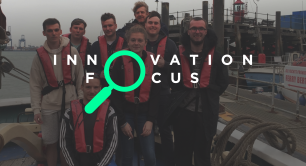Getting out of debt: Solving the equity equation for social innovation
A recent report covered in Pioneers Post revealed that the need for ‘patient, risk-bearing’ impact investment is three times greater than demand. Here, one of the report's authors, Duncan Brown, describes the 'painful contortions' his own organisation had to suffer through getting the wrong kind of investment – and maps out a way to bring down the barriers that seem to be preventing both enterprises and investors from finding better solutions.
Why is social investment so dominated by short-term, standardised and rigid debt instruments? Why is there so little suitable financial support for higher risk but potentially high return social impact innovation?
These questions often rear their head in my role as commercial director at the design and innovation charity Shift, where we’ve spent the last five years building and seeking investment for new, impact-focused ventures. One such venture is BfB Labs, a startup that’s building immersive, digital gaming interventions to support young people with their mental health. Ventures like this sometimes take multiple years to develop their products, and then need time to establish themselves in the market and get sales traction. These ventures need capital from investors who understand and are comfortable with the high-risk nature of the enterprise, and are patient enough to wait for the potentially high returns – both in financial and social impact terms.
First-hand lessons from a social impact startup
Raising money for BfB Labs, we discovered that only a very small minority of social investors were willing to consider equity investment in our new venture. Conversely, we found a relative abundance of grant funding from trusts and foundations, as well as government quangos like Innovate UK, for – ironically – the most speculative, earliest stages of the innovation process, where concepts for new products and services were being developed. We ended up raising the capital we needed for BfB Labs from a combination of these grant providers, with some vital early support from individual angel investors who were motivated by the social impact opportunity.
This caused us to do ever more painful contortions to present a version of our progress... when our reality looked very different
We are grateful for all the financial backing we got, but it was equity investment that was best-suited to our needs as a fast-moving, agile startup. The angel investors who provided it understood that our business plan needed to evolve constantly, and that we needed the flexibility to pivot our proposition and iterate our strategy as we reacted to new information and tried to get traction in the market. Our grant funders, on the other hand, were much more rigid: yes, they wanted the same impact outcome we did, but they also tied us to plans we’d submitted when we won the grant. This caused us to do ever more painful contortions to present a version of our progress that fitted the original milestones, when our reality looked very different.
Finding and validating a gap in the market
Reflecting on our own experience with BfB Labs, we were surprised by the obvious gap in the social investment market. We saw first-hand how innovation in the social sector was being hampered by this lack of early stage ‘equity-like’ investment capital from the very funders who should be backing these high-risk, yet potentially high impact, opportunities. When we talked to social investors, they described a number of barriers to investing in early-stage social enterprises: no industry track record of successful exits; expected low financial returns vs the high risk profile. But one blocker really stood out and puzzled us: apparently there wasn’t enough demand from social entrepreneurs for this type of investment?
Surely that wasn't the case? Surely there were hundreds of social entrepreneurs in the same boat as BfB Labs, that needed patient, risk-bearing capital? Ventures that, like ours, needed this funding either to kick-start a new idea, or to grow, evolve and innovate an existing solution.
We set out to find out, and with backing from Esmée Fairbairn Foundation, conducted a survey of over 300 social purpose organisations (a mix of charities, CICs, and mission-locked standard companies) to assess their real needs. The results confirmed what we thought: a significant minority of the organisations we surveyed needed patient, risk-bearing capital (18% of those we surveyed), but only one third of this group were actually seeking it. This points to significant barriers, such as a lack of awareness and understanding of this type of funding.
Surely there were hundreds of social entrepreneurs in the same boat as BfB Labs, that needed patient, risk-bearing capital?
Overcoming barriers to both demand and supply
As we turn our attention to solutions, we need to consider both sides of the supply/demand economic model. It’s true that, as the social investors we’ve spoken to have identified, we need to uncover the latent need in order to increase demand, by overcoming the barriers that are stopping social purpose organisations from going out and seeking this type of capital. But equally, if not more importantly, we also need to work on the supply side to build the market, determining the most appropriate version of patient, risk-bearing capital for the social impact sector, and increasing its availability.
This is not to say there haven’t been innovative and interesting attempts to deliver patient, risk-bearing capital. From crowdfunding platforms to government-supported patient debt funds such as Futurebuilders or the Access growth fund, through to Community Shares, and SITR tax relief schemes, providers, regulators, wholesalers and social investors alike have experimented with different forms of patient risk-bearing capital.
It’s no wonder so many social purpose organisations haven’t asked for patient risk-bearing capital; many still don’t know who to ask, how to ask, or what they are even asking for
But these efforts have been sporadic, tending to focus on solving for the investment community, rather than developing solutions that prioritise the needs of social entrepreneurs. There has been a lack of centralised coordination, which is crucial to building the market for this capital. It’s no wonder so many social purpose organisations haven’t asked for patient risk-bearing capital; many still don’t know who to ask, how to ask, or what they are even asking for.
What next?
The solution isn’t simple. To make progress we’ll need to ask and answer some knotty questions:
- How can we genuinely meet the needs of social purpose organisations that don’t look and behave like Silicon Valley unicorns?
- What sort of financial returns are reasonable for social investors given the high social impact returns that should also be generated?
- How do we structure products for asset-locked organisations that can’t take equity investment or have to restrict financial returns to investors?
- How can we use blended funding models that combine philanthropic capital to subsidise returns for finance-first investors?
We believe that a transparent, iterative, ‘test and learn’ design approach is needed to answer these questions. This means starting with a deep understanding of the needs of investees and investors. It means supporting a variety of social investors to develop a range of potential solutions taking different approaches to test in the market. It means acknowledging that there will be successes and failures, and committing to being honest and open in any assessment of 'what works'. It means sharing what we’ve learnt and building consensus around a workable way forward that can be widely adopted across the social sector.
Looking to the future we’re excited to see that the Access Foundation has recently received £30m from dormant bank accounts, part of which will be used to explicitly explore blended funding models for patient, risk-bearing capital. This is a great opportunity to embrace the ‘test and learn’ approach we advocate.
At Shift, we’re committed to playing our part too. Alongside sharing our research as widely as we can, we’re excited to be partnering with Pioneers Post to launch a series of case studies and interviews exploring the good, bad and ugly of patient, risk-bearing capital in the social sector. We’ll be talking to social entrepreneurs and investors to better understand their needs and motivations, examining recent relevant investments, and having an honest, open conversation about what’s worked and what hasn’t.
Watch this space for the first instalment.
We're working hard to provide the most up-to-date news and resources to help social businesses and impact investors share their experiences and get through the Covid-19 crisis. But we need your support to continue. As a social enterprise ourselves, Pioneers Post relies on paid subscriptions and partnerships to sustain our purpose-led journalism – so if you think it's worth having an independent, mission-driven, specialist media platform for the impact movement, please click here to subscribe.




